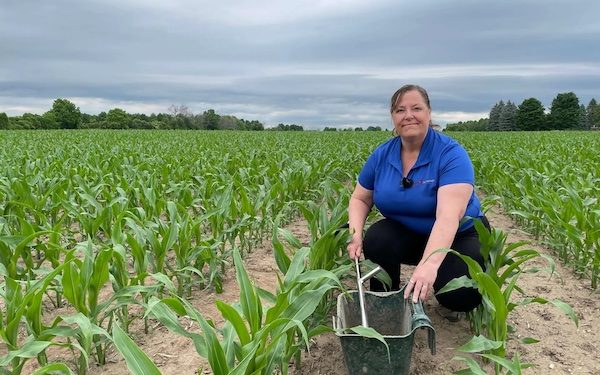Deb Campbell, an agronomist with Agronomy Advantage, shares her tips on nitrate testing fields in this episode of RealAgriculture’s Corn School.
At a corn field in its seven-leaf stage, Campbell focuses on getting enough resources to finish off the crop and reach the satisfactory yield.
“This is a great window to reassess and do a gut check on that nitrogen (N) plan that we had in place,” Campbell says. “Do we increase it? Do we soften it a little bit? What’s the status of this corn today? Producers use that number of a pound of N per bushel of corn, and that’s still a good place to start.”
Campbell suggests tissue sampling the plants and nitrate testing at the the seven-leaf stage. When assessing, farmers should factor in how much N they've already applied, how much mineralization they're getting at this point and how much moisture they've had. They should also get a good representation of the field.
“To do a nitrate test, and to do it well, so that you have reasonable confidence in the numbers that you’re getting back. You’ll want to take a 12-inch core in the field,” she says.
Getting down that far may be a challenge, so farmers may have to put the probe in twice. Farmers should also consider how the field has been maintained.
“In strip-till vs. full tillage or if you’re running a high N starter, take a few more probes out of the row vs. between the row and then look at the spatial complexity of the landscape,” says Campbell.
Doing re-tests on the field would be beneficial to both farmers and the yield of crops, Campbell suggests. To do this, re-test the nitrate levels in the soil and depending on the results, make a plan.







Post a comment
Report Abusive Comment